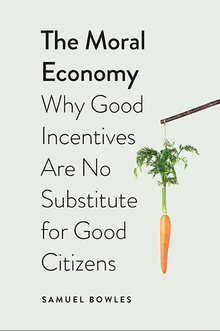The Handbook of Board Governance: A Comprehensive Guide for Public, Private, and Not-for-Profit Board Members
Contents:
1 The Handbook of Board Governance: An Introduction and Overview 1
Richard Leblanc
I The Board’s First Responsibility: The Right CEO 43
2 CEO Succession Planning Trends and Forecast 45
Gary Larkin
3 CEO Succession Planning 58
David F. Larcker and Brian Tayan
4 CEO Succession: Lessons from the Trenches for Directors 77
Mark B. Nadler
Appendix 1 Model CEO Succession Planning Charter 98
Richard Leblanc
Appendix 2 Model CEO Position Description 105
Richard Leblanc
II The Board’s Second Responsibility: The Right Board Chair 111
5 The Nonexecutive Chairman: Toward a Shareholder Value Maximization Role 113
Henry D. Wolfe
6 Great Boards Don’t Exist Without Great Chairs 148
Elizabeth Watson and Heather Kelsall
7 What’s in a Name? The Lead Director Role at U.S. Public Companies 164
Richard Fields and Anthony Goodman
Appendix 3 Model Board Chair Position Description 192
Richard Leblanc
III Who is at the Board Table? Board Composition, Dynamics, and Decision-Making 197
8 Director Independence, Competency, and Behavior 199
Richard Leblanc
9 Board Behaviors: How Women Directors Influence Decision Outcomes 233
Dr. Mary Halton
10 The State of Gender Diversity in Boardrooms 253
Dr. Nancy Gianni Herbert
11 Every Seat Matters 269
Annie Tobias and Lina Pallotta
12 The Art of Asking Questions as a Director 283
J. Lyn McDonell
13 Board Succession, Evaluation, and Recruitment: A Global Perspective 301
Jakob Stengel
Appendix 4 Model Individual Director Position Description 319
Richard Leblanc
Appendix 5 Model Conflict of Interest Policy for Directors 323
Richard Leblanc
IV The Work of the Board 333
A. Climate governance 333
14 Climate Change and Directors’ Duties: Closing the Gap Between Legal Obligation and Enforcement Practice 335
Ellie Mulholland, Sarah Barker, Cynthia Williams, and Robert G. Eccles
15 Board Oversight and Climate Change: What Directors Need to Know 369
Patricia A. Koval
16 Responsible Boards for a Sustainable Future 398
Dr. Yilmaz Argüden
17 Corporate Governance to Advance Business and Society 434
Alice Korngold
B. Technology Governance 467
18 Technology and the Corporate Board 2020 and Beyond 469
Dr. Gary L. Evans
19 Responsive Governance in a Digital World: The Need to Up-Skill 492
Dr. Elizabeth Valentine, Dr. Steven De Haes, and Dr. Anant Joshi
20 The Impact of Blockchain Technology for Corporate Governance 526
Jack J. Bensimon
21 Blockchain: An Introduction for Boards of Directors 556
Dr. Elizabeth Valentine, Dr. Greg Timbrell, Lachlan Feeney, and Dr. John Puttick
22 Reflections of a Board Chair on the Christchurch Massacre: Governing Social Media 578
Drew Stein
C. Risk and Financial Governance 595
23 Financial Literacy and Audit Committees: A Primer for Directors and Audit Committee Members 597
Jason Masters
24 Corporate Governance in an Age of Populism 624
John Zinkin
25 A Call to Action for Geopolitical Governance 641
Sean West and Rohitesh Dhawan
26 Governing Boards, Risk Management, and Deliberative Thinking 655
Michael Useem
27 Lawyers’ Advice to Directors on Overseeing Executive Pay 672
Howard Levitt and Allyson Lee
28 Accountant’s Advice to Company Directors: Directors’ Obligations to Detect Top-10 Frauds 687
Dr. L. S. (Al) Rosen
29 Ten Tell-Tale Signs ofPossible Fraud: A Director’s Primer 704
James Hunter
30 100 Questions Directors Should Ask When Assessing the Effectiveness of Risk Systems 713
F. Edward “Ted” Price
31 Risk Oversight for Directors: A Practical Guide 719
Stephen J. Mallory
32 Risk Governance: Leading Practice and Demographic Impacts 739
Ingrid Robinson
D. Strategic Governance 759
33 Agile Governance 761
Scott Koerwer and Joseph Perfetti
34 The Three Dilemmas for Creating a Long-Term Board 786
Ariel Fromer Babcock, Robert G. Eccles, and Sarah Keohane Williamson
35 Strategic Blindspots in the Boardroom 815
Estelle Métayer
E. Human Capital and Compensation Governance 839
36 Winter is Coming: The Approaching Human Capital Management Storm 841
Solange Charas and Michael Young
37 The Effective Compensation Committee 861
Steven Hall and Steven Hall Jr
38 Compensation Governance and Performance-Based Executive Compensation 889
Paul Gryglewicz
39 Measuring and Improving Pay for Performance: Board Oversight of Executive Pay 906
Stephen F. O’Byrne
40 Designing Performance for Long-Term Value: Aligning Business Strategy, Management Structure, and Incentive Design 930
Mark Van Clieaf
41 Mind the Gap: How Human Resources Can Become More Integral to the Corporate Boardroom Agenda 953
Jay A. Conger and Edward E. Lawler III
F. Legal and Governance Responsibilities of Directors 967
42 Board Risk and Responsibility Under Regulatory and Criminal Law 969
Norm Keith
43 Riding Between Cars: The Position of the Corporate Secretary 987
Douglas K. Chia
44 Ensuring Good Governance and Business Success in International Subsidiaries 1004
Thomas C. Sears
V Shareholder Engagement and Board Accountability 1021
45 The Rise of Investor Stewardship 1023
Stephen Davis
46 Director/Shareholder Meetings 1049
Stephen Erlichman
47 Dual-Class Share Firms in Developed Market Economies 1066
Anita I. Anand
48 For Directors: The Long-Term Relationship Between Directors, Companies, and Institutional Investors 1088
Carol Nolan Drake
49 Proxy Scorecards Will Empower Investors 1111
James McRitchie
VI Not-For-Profit Governance 1127
50 Charitable and Not-for-Profit Organization Governance 1129
Donald J. Bourgeois
51 The Best of Boards, the Worst of Boards: The Not-for-Profit Experience 1145
Adam Quinton
52 Fundraising Best Practices for Not-for-Profit Boards of Directors 1164
Stephanie Cory
VII Small and Medium Company Governance 1179
53 Governance of Small and Medium-Sized Entities 1181
Jo Iwasaki
54 Private Versus Public Company Governance: Top-13 Questions for Board Members to Consider 1197
Carol Nolan Drake and Sally J. Curley
55 Cannabis Governance: Advice for Current and Prospective Directors in This Emerging Industry 1220
Steve Chan
VIII Global Corporate Governance 1229
56 Cross-Border Corporate Governance 1231
Hari Panday
57 Corporate Governance in Asia-Pacific 1260
John Zinkin
58 Boards of Directors of Chinese Companies 1287
David H. Zhu, Wei’An Li, and Yaowei Zhang
59 The Russian Corporate Governance Story 1316
Alexander A. Filatov
60 CARICOM (Caribbean Community) Governance 1333
Ronaele Dathorne-Bayrd
61 King IV: Taking Corporate Governance to the Next Level 1343
Parmi Natesan and Dr. Prieur Du Plessis









